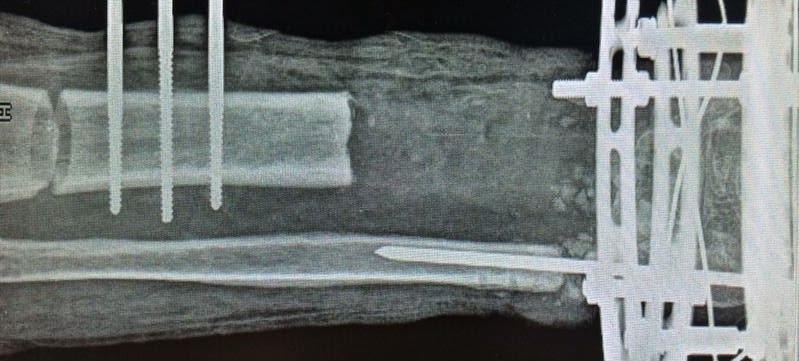Este artículo es originalmente publicado en:
http://www.ncbi.nlm.nih.gov/pubmed/21150726
http://journals.lww.com/pedorthopaedics/pages/articleviewer.aspx?year=2011&issue=01000&article=00005&type=abstract
De:
Garner MR1, Bhat SB, Khujanazarov I, Flynn JM, Spiegel D.
J Pediatr Orthop. 2011 Jan-Feb;31(1):11-6. doi: 10.1097/BPO.0b013e31820321ab.
Todos los derechos reservados para:
Copyright © 2015 Wolters Kluwer Health, Inc. All rights reserved.
Abstract
BACKGROUND:
METHODS:
RESULTS:
CONCLUSIONS:
Resumen
ANTECEDENTES:
El tratamiento de las fracturas de la diáfisis femoral en niños más pesados ha sido ampliamente estudiado, sin embargo, ningún estudio ha comparado directamente los clavos elásticos (TEN) y los clavos de bloqueo rígido (NLR) en esta población. Nuestro objetivo fue comparar TEN con NLR en fracturas de longitud estable diafisaria del fémur en niños más pesados y adolescentes (47 a 85 kg) utilizando cohortes emparejado con el peso.
RESULTADOS:
Quince pacientes de cada cohorte podrían peso igualados (TEN, 60,8 kg vs NLR, 60,4 kg). La cohorte RNL era mayor (15,4 vs. 13,5 y; P = 0,005). Tiempo en la sala de operaciones y la pérdida de sangre estimada fue mayor en la cohorte del NLR: 158 frente a 220 minutos (p = 0,003) y 42 frente a 182 ml (p = 0,003), respectivamente. Todos los pacientes tenían un rango completo de movimiento en el último seguimiento. Se observaron complicaciones en 6 de 15 TEN y 10 de 15 RNL (P = 0,14). Problemas relacionados con el implante fueron más frecuentes en los pacientes del NLR, pero esto no fue estadísticamente significativa (3 de 15 frente a 9 de 15; p = 0,06). En los diez cohortes, consolidación viciosa y la pierna longitud discrepancia (> 2 cm) cada ocurrieron en un solo paciente (20 grados de varo, 2,3 cm de acortamiento, respectivamente) en comparación con 0 de 15 en NLR (P = 0,48). El tratamiento con TEN resultó en un cargo total de $ 742 más que el NLR (P = 0,75).
CONCLUSIONES:
En nuestra comparación emparejados por peso, el uso de los TEN resultó en menor tiempo en la sala de operaciones, la pérdida estimada de sangre, y los problemas relacionados con el implante. Mala unión y la longitud de la pierna discrepancia siguen siendo motivo de preocupación cuando los pacientes más pesados son tratados con TEN, pero no aumentaron significativamente con respecto a RNL en este estudio
- PMID:
- 21150726
- [PubMed - indexed for MEDLINE]

No hay comentarios:
Publicar un comentario